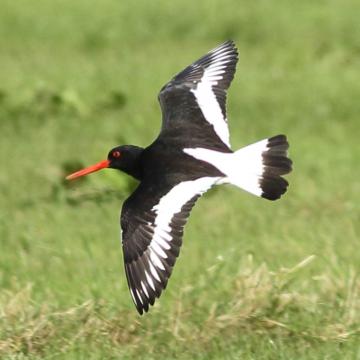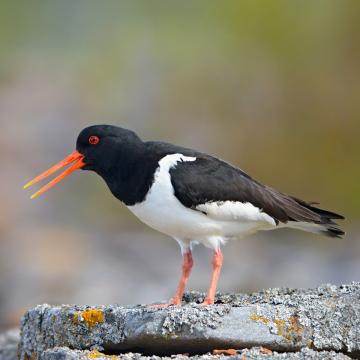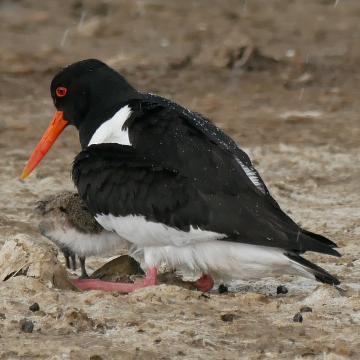Haematopus ostralegus
Frequent
Summary
The oystercatcher is one of the UK's most familiar wading birds and is a common sight (and sound) on coastlines around the UK.
The oystercatcher can also be seen further inland and is often seen here at Grimsargh Wetlands.
Most of the UK's population still spend the winter on the coast. Large numbers of oystercatcher can be seen during the winter at nearby estuaries on the Lancashire coast where it feeds on cockles, mussels and other shellfish, which it prises open with its strong, sturdy bill.
Oystercatcher facts and statistics
• Length: 40-45cm
• Wingspan: 83cm
• Weight: 540g
• Diet: shellfish on the coast, mainly worms inland
How to identify
The oystercatcher is larger than many other wading birds and has a black head, back and wings with a white belly. It has a long, red bill and pinkish-red legs.
Conservation status
The oystercatcher is classified as Amber on the UK's watch list of Birds of Conservation Concern.
Habitat
• Coast/ seashore
• Estuaries
• Wetlands
• Gravel pits
• Large rivers
Oystercatcher sightings at Grimsargh Wetlands





